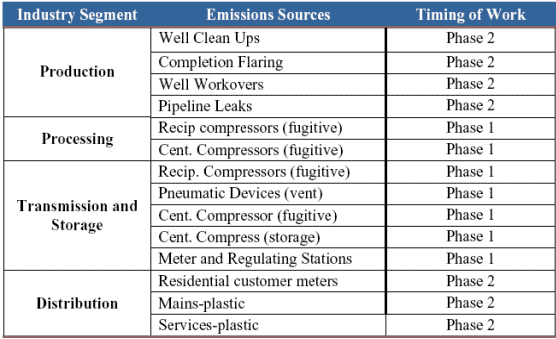|
|
|
Project Overview
Methane (CH4) is the primary component of
natural gas and is also a greenhouse gas (GHG), with a
100-year global warming potential (GWP) roughly 21 - 23
times that of CO2 (IPCC, 1996 and IPCC, 2001). As documented
in the U.S. Environmental Protection Agency’s Inventory of
Greenhouse Gas Emissions, released in 2006 (EPA, 2006),
emissions from natural gas production, processing, and
distribution are among the top ten source categories of
greenhouse gas emissions in the United States, expressed on
a CO2 equivalent basis. These emissions arise from “hundreds
of thousands of wells, hundreds of processing facilities,
and over a million miles of transmission and distribution
pipelines” (EPA, 2006). The number and diversity of sources
lead to uncertainties in the emissions estimates that are
approximately 30% (118.8 Tg CO2 Eq. per year with a lower
bound of 84.3 and an upper bound of 155.5 Tg CO2 Eq.) (EPA,
2006).
Currently, the primary source of
information on CH4 emissions from the natural gas
industry is a study conducted in 1996 for the Gas Research
Institute (GRI) and the U.S. Environmental Protection Agency
(EPA). While the GRI/EPA Study serves as the basis for most
natural gas industry CH4 emission estimates
worldwide, there have been significant changes in the
industry since the time the study was performed and
opportunities exist for reducing the uncertainties
associated with the emission estimates.
The overall goal of the project is to
update default CH4 emission factors for selected processes
and equipment used in the natural gas industry that take
account of new data collected since the GRI/EPA study and
reflect any significant changes in practices or equipment
since the GRI/EPA study. The processes and equipment for
which GHG emission factors will be evaluated are listed in
the table below. The default emission factors will be
updated by compiling and synthesizing existing data and by
acquiring new emission rate measurement data for selected
sources where existing data have unacceptably large
uncertainties or are insufficiently representative of
current practices or equipment.

References
Environmental Protection Agency, (2006) Inventory of U.S.
Greenhouse Gas Emissions and Sinks: 1990 – 2004, Washington,
DC 20460, U.S.A., April 15, 2006.
Environmental Protection Agency (1996a),
Methane Emissions from the Natural Gas Industry
Volume 2: Technical Report, Final Report, GRI-94/0257.1 and
EPA 600/R-96-080b. Gas
Research Institute and U.S. Environmental Protection Agency,
June 1996.
Intergovernmental Panel on Climate Change,
Climate Change
1995: The Science of Climate Change (Cambridge, UK: Cambridge
University Press, 1996).
Intergovernmental Panel on Climate Change,
Climate
Change 2001: The Scientific Basis (Cambridge, UK:
Cambridge University Press, 2001). |